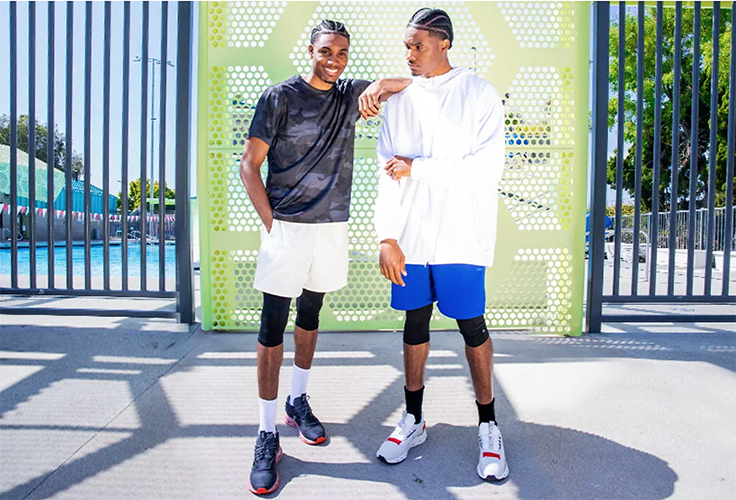S&P Global Ratings affirmed all its ratings, including its ‘BB+’ issuer credit rating, on Foot Locker following a review.
S&P said, “Nike’s decision to accelerate its strategic shift to its direct-to-consumer (DTC) channel will likely hurt Foot Locker’s gross margin and cash flow generation. However, we expect the company to increase its vendor diversification efforts and maintain credit metrics at levels we consider appropriate for the current rating. Foot Locker announced in February 2022 that it would reduce its vendor concentration with Nike starting in the fourth quarter of 2022. We estimate the share of Foot locker’s revenues attributed to Nike products will likely decline to approximately 60percent in 2022 and 55percent in 2023 from 70percent in 2021 and, subsequently, we expect overall revenues for Foot Locker to decline in the low- to mid-single-digit range both years before returning to growth in 2024. In addition, we expect margins to continue to decline as less profitable product lines take over, supply chain dynamics remain strained and the promotional environment continues to normalize resulting in the company’s reported free cash flow reaching about half its pre-pandemic level during the next two years. Overall, we expect the company to maintain its strong credit metrics including S&P Global Ratings-adjusted leverage in the high-1x area in the next two years thanks to its low-funded debt load and its balanced financial policy, allowing it to use its excess free cash flow for dividends and share repurchases.
“Foot Locker announced that Nike will remain one of its key strategic partners and will continue to grant access to its premium products. In addition, the loss of revenues from Nike will likely be partly offset by an increasingly diverse assortment of products as Foot Locker recently announced a new long-term strategic partnership with Adidas with a target of more than $2 billion in retail sales by 2025, nearly tripling levels from 2021. While the company is growing its private label offering, it also completed in 2021 two acquisitions—Eurostar, Inc. (SS) and Text Trading Co. K.K. (Atmos)—which further diversify its business, expanding it beyond malls and extending its reach in Asia.
“Foot Locker is growing its digital sales and we expect it to keep its leading market position in the highly competitive and fragmented specialty footwear industry. As a result of the COVID restrictions, digital sales at Foot Locker grew significantly during the pandemic and became a key driver for overall revenue growth. For fiscal 2021, digital sales contributed about 21.5percent to the total revenue and we expect Foot Locker’s overall digital sales to be approximately 20percent of its total sales, compared with the approximately 16percent generated online pre-pandemic as we believe a good portion of shopping for footwear has permanently shifted online because of the increased infrastructure to support this channel and the convenience it brings to consumers. As Foot Locker’s in-store traffic declines, its ability to offer a differentiated and seamless customer experience—both in store and online—will be essential to long-term success in our view.
“Operating performance remains highly dependent on product flow and innovation from its key vendor as it faces declining mall traffic. Even with Nike’s penetration declining to 55percent by the end of 2022, in our view, Foot Locker will continue to rely heavily on Nike to deliver on-point and differentiated merchandise that appeals to its young, fashion-sensitive core demographic. Despite Foot Locker’s product assortment becoming increasingly diverse, the increased prevalence of social media, especially among Foot Locker’s core demographic, has shortened the duration and amplified the volatility of fashion cycles. Therefore, the company’s long lead times for ordering merchandise from suppliers increase its susceptibility to fashion missteps and can lead to performance volatility. In addition, secular changes in the footwear-retailing industry, including the entrance of online players and the existing vendors’ increased focus on building their own DTC channels, have pressured the company’s performance as customers can connect directly with the brand and bypass retailers. Finally, despite the company gradually migrating from the mall, it still remains mostly in malls (about 79 percent of its fleet as of fiscal 2021), which continue to face secular challenges.
“The stable outlook reflects our expectation that Foot Locker will continue to stabilize its operating trends over the next 12 months despite the loss of sales from a portion of its Nike business. We expect the demand for its non-Nike products to remain healthy, in particular its basketball product lines, and that the company will continue to grow its digital channels and store-level productivity, leading to leverage remaining in the high-1x area over the next year.”
Photo courtesy Foot Locker















